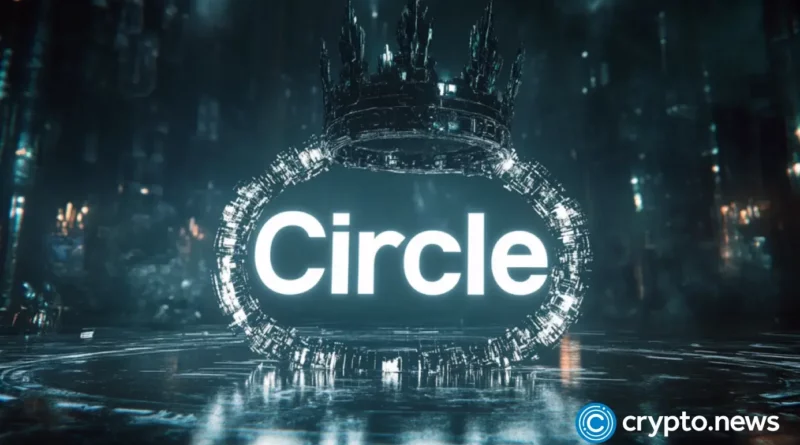Circle’s Arc testnet brings institutional rivals onto one ledger
Circle is witnessing a rapid consolidation of financial heavyweights around its Arc testnet, as competitors from Goldman Sachs to Visa begin aligning on a common technological standard for the future of money movement.
Summary
- Circle launched Arc testnet, bringing more than 100 major banks and payment firms onto shared blockchain settlement rails.
- Institutions including Goldman Sachs, BlackRock, and Visa are testing faster settlement, programmable payments, and global interoperability.
- Arc aims to evolve into a neutral, community-run network supporting multi-currency stablecoin infrastructure.
On Oct. 28, USDC issuer Circle announced the public testnet launch of Arc, a Layer 1 blockchain designed to give banks, market infrastructure providers, and global payment networks a single programmable environment to test real-world asset settlement.
Circle said over 100 organizations across traditional finance, fintech, and digital asset markets are already plugged into the network, including State Street, Deutsche Bank, BlackRock, Goldman Sachs, and Visa.
The testnet creates a controlled setting for institutions that normally compete head-to-head to evaluate shared technical rails built around faster settlement, predictable dollar-based fees, and privacy options tailored for regulated markets.
“Combined, these companies reach billions of users, move, exchange, and custody hundreds of trillions in assets and payments, and support local economies across Africa, the Americas, Asia, Europe, and the Middle East. This geographic diversity highlights a defining strength of Arc: its purpose-built to connect every local market to the global economy,” Circle CEO Jeremy Allaire said.
Circle tests a network built to outgrow its creator
While Circle is currently stewarding the Arc testnet, its long-term vision is to transition the network into a distributed, community-driven system. The USDC issuer outlined a progression that will expand validator participation beyond its own control and establish transparent governance frameworks.
The stated goal is for Arc to evolve into a shared, neutral layer of economic infrastructure for the internet, collectively operated by the very financial institutions, technology platforms, and developers now testing it.
Development is advancing alongside an unusually broad coalition of participants, with the roster extending well past household giants. Beyond the initial names, the banking and asset management cohort includes international heavyweights like Switzerland’s Bank Frick, Brazil’s BTG Pactual, the Middle East’s First Abu Dhabi Bank and Emirates NBD, and Africa’s Absa and FirstRand Bank.
The global payments and technology ecosystem is equally robust, with involvement from cloud infrastructure giants Amazon Web Services and Cloudflare, fintech players like Brex and Ramp, and global payment processors including Fiserv, Nuvei, and dLocal.
A key differentiator for Circle’s Arc is its immediate engagement with a global network of stablecoins. Issuers from Australia, Brazil, Japan, Mexico, the Philippines, South Korea, and Canada are bringing their fiat-pegged digital assets onto the testnet. This positions Arc not solely as a US dollar-centric chain, but as a potential hub for a multi-currency, onchain foreign exchange layer.
The network is also supported by a full stack of developer and market infrastructure. Wallets like MetaMask and Ledger, tools from Alchemy and Chainlink, and cross-chain bridges like Wormhole are integrating. Liquidity is provided by a blend of decentralized exchanges like Uniswap and Curve, centralized exchanges including Coinbase and Kraken, and institutional market makers such as Galaxy Digital and Wintermute.
Testing specific institutional use cases
Robert Mitchnick, Global Head of Digital Assets at BlackRock, stated the firm is exploring how “stablecoin-denominated settlement and onchain FX capabilities might enable more efficient capital markets.” At Goldman Sachs, Mathew McDermott is focused on testing “programmable settlement and interoperable FX workflows” to enhance regulated markets.
For global payments, the focus is on efficiency and connectivity. HSBC’s Manish Kohli said the bank is exploring how Arc can enable new technical infrastructure for “more efficient and connected” global payments. Similarly, Mastercard and Visa are evaluating the network’s potential to enhance payment experiences.
Mastercard’s Raj Dhamodharan noted work to “enable secure, simple payment experiences across both fiat and stablecoin rails,” while Visa’s Cuy Sheffield highlighted the exploration of how trusted payment networks can “connect to and help scale emerging onchain infrastructure.”




